
DIY Succulent Terrarium: A Step-by-Step Guide to Stunning Home Decor

Succulent terrariums have become increasingly popular in home decor, with their unique combination of lush greenery and minimalist design. These miniature gardens are not only visually stunning, but also easy to care for, making them a great addition to any space. Whether you have a green thumb or are a complete novice when it comes to gardening, creating your own succulent terrarium can be a fun and rewarding DIY project.
We will provide a step-by-step guide to creating your own stunning succulent terrarium. We will cover everything from selecting the right container and soil to choosing the perfect succulents and arranging them in an aesthetically pleasing way. We will also discuss the proper care and maintenance of your terrarium to ensure that your succulents thrive and continue to enhance your home decor. So grab your gardening gloves and let's get started on creating a beautiful succulent terrarium!
- Choose a glass container for your succulent terrarium
- Layer the bottom of the container with rocks or pebbles for drainage
- Add a layer of activated charcoal to prevent odors and mold
- Fill the container with succulent potting mix
- Select a variety of succulents that will thrive in your terrarium
- Plant the succulents in the potting mix, leaving enough space for growth
- Arrange decorative elements, such as small rocks or moss, around the plants
- Water the terrarium lightly, being careful not to overwater
- Place the terrarium in a location with bright, indirect sunlight
- Mist the terrarium occasionally to maintain humidity
- Monitor the terrarium for any signs of pests or disease
- Enjoy your stunning DIY succulent terrarium as a beautiful home decor piece
Choose a glass container for your succulent terrarium
When it comes to creating a DIY succulent terrarium, the first step is to carefully choose a glass container that will serve as the perfect home for your plants. The container you choose should be transparent, allowing you to showcase the beauty of your succulents while also providing them with the necessary sunlight.
There are various options to consider when selecting your glass container. You can opt for a traditional fishbowl shape, a geometric terrarium, or even repurpose an old mason jar. The choice is yours, but make sure the container has a wide enough opening to easily place and arrange your succulents.
Additionally, consider the size of your container. If you're a beginner, it's best to start with a smaller container as it will be easier to manage and require less maintenance. However, if you're feeling more adventurous, a larger container can provide a stunning centerpiece for your home.
Once you've chosen your glass container, make sure to clean it thoroughly before proceeding. Any residue or dirt can affect the overall health of your succulents, so take the time to give it a good wash with mild soap and water.
Gather your materials
Now that you have your glass container ready, it's time to gather all the materials you'll need to create your stunning succulent terrarium.
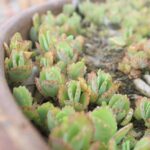 Discover the Best Online Shops for Mini Succulents in Pots
Discover the Best Online Shops for Mini Succulents in PotsHere's a list of materials you'll need:
- Succulent plants: Choose a variety of succulents that have similar light and water requirements. Some popular choices include Echeveria, Sedum, and Haworthia.
- Cactus soil: Succulents thrive in well-draining soil, so make sure to use a specialized cactus or succulent mix.
- Activated charcoal: This will help keep your terrarium fresh by absorbing any odors or impurities.
- Pebbles or rocks: These will create a drainage layer at the bottom of your terrarium to prevent waterlogging.
- Moss: Moss can be used as a decorative element to cover the soil and give your terrarium a lush look.
- Decorative elements: Get creative and add some personal touches to your terrarium with decorative elements like small figurines, pebbles, or seashells.
- Misting bottle: Succulents don't require much water, so a misting bottle will help you provide just the right amount of moisture.
Make sure you have all these materials ready before moving on to the next step to ensure a smooth and enjoyable terrarium-building process.
Layer the bottom of the container with rocks or pebbles for drainage
Creating a DIY succulent terrarium is a fun and rewarding project that can add a touch of natural beauty to your home decor. Whether you have a green thumb or are new to gardening, this step-by-step guide will help you create a stunning succulent terrarium that will impress your guests and brighten up any space.
Step 1: Choose the Right Container
The first step in creating a DIY succulent terrarium is to choose the right container. You can use any clear glass container, such as a vase, jar, or even a fishbowl. Make sure the container has good drainage to prevent water from pooling at the bottom.
Step 2: Layer the Bottom with Rocks or Pebbles
Once you have your container, layer the bottom with rocks or pebbles. This will provide drainage for the succulents and prevent the roots from sitting in water. Make sure to evenly distribute the rocks or pebbles across the bottom of the container.
Step 3: Add a Layer of Activated Charcoal
Next, add a thin layer of activated charcoal on top of the rocks or pebbles. The activated charcoal will help filter the water and keep it fresh, preventing any unpleasant odors from developing in your terrarium.
 Captivating Succulent Beauty: A Photography Journey
Captivating Succulent Beauty: A Photography JourneyStep 4: Add a Layer of Potting Soil
After the activated charcoal, add a layer of well-draining potting soil on top. Make sure to choose a potting soil specifically formulated for succulents, as they require excellent drainage. Spread the soil evenly across the container, leaving enough space for the plants.
Step 5: Select and Plant Your Succulents
Now comes the fun part – selecting and planting your succulents! Choose a variety of different succulent plants to create an interesting and visually appealing terrarium. You can mix and match different colors, shapes, and sizes for a stunning display.
Remove the succulents from their original containers and gently loosen the roots. Make a small hole in the soil and place the succulent inside, covering the roots with more potting soil. Press the soil gently around the base of the plant to secure it in place.
Step 6: Decorate with Rocks, Pebbles, or Moss
Once your succulents are planted, it's time to add some decorative touches to your terrarium. You can use small rocks, pebbles, or even moss to create a natural and visually appealing landscape. Arrange these elements around the succulents to add depth and texture to your terrarium.
Step 7: Water and Care for Your Succulent Terrarium
After completing your succulent terrarium, give it a good watering. Be careful not to overwater, as succulents prefer dry conditions. Check the soil regularly and only water when it feels dry to the touch.
Place your terrarium in a spot that receives indirect sunlight, as direct sunlight can cause the succulents to burn. Succulents are low-maintenance plants, but it's important to monitor their growth and remove any dead leaves or plants to keep your terrarium looking its best.
With these simple steps, you can create a stunning DIY succulent terrarium that will add a touch of natural beauty to your home decor. Get creative and experiment with different succulent varieties and container designs to make your terrarium truly unique!
 DIY Succulent Terrariums: Simple Steps for Stunning Results
DIY Succulent Terrariums: Simple Steps for Stunning ResultsAdd a layer of activated charcoal to prevent odors and mold
Adding a layer of activated charcoal is an essential step to ensure the longevity of your DIY succulent terrarium. Not only does it help prevent odors, but it also prevents the growth of mold and mildew.
Activated charcoal, also known as activated carbon, is a highly porous substance that effectively absorbs impurities and toxins in the air. By placing a thin layer of activated charcoal at the bottom of your terrarium, you create a natural filtration system that keeps the environment clean and fresh.
To add the activated charcoal layer, follow these simple steps:
- Gather the materials: You will need a bag of activated charcoal, a small shovel or spoon, and a piece of mesh or landscaping fabric.
- Cut the mesh or fabric: Take the piece of mesh or landscaping fabric and cut it to fit the bottom of your terrarium. This will prevent the charcoal from mixing with the soil layer.
- Add the mesh or fabric: Place the cut piece of mesh or fabric on the bottom of the terrarium to create a barrier between the charcoal and the soil.
- Add the activated charcoal: Using a small shovel or spoon, carefully pour a layer of activated charcoal on top of the mesh or fabric. Aim for a thickness of about half an inch to effectively absorb any potential odors.
- Spread and level: Gently spread and level the charcoal layer with the back of the shovel or spoon to ensure an even distribution.
Once you have successfully added the layer of activated charcoal, you can proceed to the next step of building your stunning DIY succulent terrarium. The activated charcoal will act as a natural purifier, keeping your terrarium fresh and odor-free for months to come.
Fill the container with succulent potting mix
Once you have chosen a container for your succulent terrarium, the first step is to fill it with succulent potting mix. This specialized mix is designed to provide the perfect drainage and aeration for your succulents, ensuring their health and longevity.
 Moss and Succulents: A Unique Aesthetic for Stunning Décor
Moss and Succulents: A Unique Aesthetic for Stunning DécorStart by pouring the potting mix into the container, filling it about halfway. Use a spoon or your fingers to gently spread the mix evenly, making sure to leave enough space for the roots of your succulents.
Pro tip: If you can't find succulent potting mix, you can create your own by combining regular potting soil with sand or perlite. This will help improve drainage and prevent overwatering, which can be detrimental to succulents.
Choose your succulents
Now that your terrarium is ready with potting mix, it's time to choose the perfect succulents for your arrangement. Look for healthy succulents with vibrant colors and firm leaves. Popular choices for terrariums include Echeveria, Sedum, and Haworthia.
Consider selecting a variety of succulents with different shapes, sizes, and textures to create an eye-catching and visually appealing terrarium. This will add depth and interest to your arrangement.
Plant your succulents
Once you have selected your succulents, it's time to plant them in the terrarium. Make small holes in the potting mix using your fingers or a small tool, and gently place the succulents into the holes. Press the soil around the base of each plant to secure it in place.
Be mindful of spacing between the succulents, as overcrowding can hinder their growth. Leave enough room for them to breathe and spread their roots. You can also create visual interest by varying the heights and placement of the succulents.
Add decorative elements
Now that your succulents are planted, it's time to add some decorative elements to enhance the visual appeal of your terrarium. You can use small rocks, pebbles, or colored sand to create a base layer or pathways within the terrarium.
 Where to Find Bulk Succulent Pots at a Discounted Price
Where to Find Bulk Succulent Pots at a Discounted PriceConsider adding some miniature figurines, decorative stones, or even small fairy lights to add a whimsical touch to your terrarium. Get creative and let your personal style shine through!
Pro tip: If you want to add a personal touch, you can also include some small trinkets or mementos that hold special meaning to you. This will make your terrarium truly unique and meaningful.
Care for your terrarium
Once your succulent terrarium is complete, it's important to properly care for it to ensure the health and longevity of your plants.
- Light: Succulents thrive in bright, indirect sunlight. Place your terrarium near a window or in a well-lit area of your home.
- Watering: Succulents have low water needs. Water your terrarium sparingly, allowing the soil to dry out completely between waterings.
- Temperature: Succulents prefer moderate temperatures between 60-75°F (15-24°C). Avoid exposing them to extreme heat or cold.
- Maintenance: Remove any dead or yellowing leaves from your terrarium to promote healthy growth. You can also trim back overgrown succulents if needed.
By following these care instructions, your succulent terrarium will continue to thrive and bring joy to your home for years to come!
Select a variety of succulents that will thrive in your terrarium
When it comes to creating a stunning DIY succulent terrarium, the first step is to carefully select the right variety of succulents. These resilient plants are perfect for indoor gardening and can add a touch of natural beauty to any space.
Before purchasing your succulents, it's important to consider their specific needs and characteristics. Some succulents prefer direct sunlight, while others thrive in partial shade. Additionally, certain varieties grow taller and require more space, while others stay small and compact.
 Enhance Your Garden with Trailing Vine Succulents: A Guide
Enhance Your Garden with Trailing Vine Succulents: A GuideHere are a few popular succulent varieties that are known to do well in terrariums:
- Echeveria: These rosette-shaped succulents come in a wide range of colors and are known for their exquisite foliage.
- Haworthia: With their striking geometric patterns and low-maintenance nature, Haworthias are perfect for terrariums.
- Crassula: Also known as jade plants, Crassulas have thick, glossy leaves and are great for adding height to your terrarium.
- Sedum: These versatile succulents come in various shapes and sizes and are known for their ability to withstand drought.
When choosing your succulents, try to select a mix of colors, textures, and heights to create a visually appealing arrangement. Remember to consider the size of your terrarium and the growth habit of each succulent to ensure they have enough space to thrive.
Now that you have selected your succulents, it's time to move on to the next step: preparing the terrarium.
Plant the succulents in the potting mix, leaving enough space for growth
Creating your own DIY succulent terrarium is a fantastic way to add a touch of greenery and elegance to your home decor. One of the key steps in this process is planting the succulents in the potting mix. This step requires careful attention to ensure the health and growth of your succulents.
Here's a step-by-step guide to help you plant your succulents in the potting mix:
- Choose the right potting mix: Succulents thrive in well-draining soil, so it's important to use a potting mix specifically designed for succulents. Avoid using regular garden soil, as it can retain too much moisture and cause root rot.
- Select a suitable container: Choose a container that has drainage holes to prevent water from accumulating at the bottom. This will ensure that the roots of your succulents don't become waterlogged.
- Add a layer of gravel or rocks: Before adding the potting mix, create a drainage layer at the bottom of the container. This can be done by placing a layer of small gravel or rocks. This layer will help excess water escape and prevent the roots from sitting in water.
- Fill the container with potting mix: Fill the container with the succulent potting mix, leaving enough space for the roots of the succulents. Gently pat down the soil to remove any air pockets.
- Prepare the succulents: Carefully remove the succulents from their nursery pots, gently loosening the roots. If the roots are tightly wound, you can gently tease them apart to encourage healthy growth.
- Plant the succulents: Dig small holes in the potting mix to accommodate the succulents. Place each succulent in a hole, ensuring that the roots are covered with soil and the plant is stable. Leave enough space between each succulent to allow for their growth.
- Water sparingly: After planting, give your succulents a light watering to settle the soil. Succulents are drought-tolerant plants, so it's important not to overwater them. Wait until the soil is completely dry before watering again.
By following these steps, you'll be able to plant your succulents in the potting mix successfully. Remember to choose a variety of succulents with different colors, textures, and sizes to create a visually stunning terrarium. Enjoy the process of creating your own DIY succulent terrarium and watch it become a beautiful addition to your home decor!
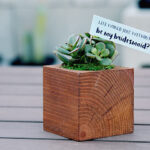 Discover Unique Succulents in Wood for Stylish Home Decor
Discover Unique Succulents in Wood for Stylish Home DecorArrange decorative elements, such as small rocks or moss, around the plants
Once you have chosen and arranged your succulents in the terrarium, it's time to add some decorative elements to enhance the overall look. Consider using small rocks, pebbles, or moss to create an aesthetically pleasing display.
Step 1: Begin by carefully placing small rocks or pebbles around the base of each succulent. This not only adds visual interest but also helps with drainage and prevents water from pooling around the plants' roots.
Step 2: If you prefer a more natural and organic look, consider adding some moss to the terrarium. Moss can be placed in between the succulents or used as a ground cover around the base of the plants. It adds texture and a touch of greenery to the arrangement.
Step 3: Another option is to incorporate decorative elements like seashells, small figurines, or colored stones to create a personalized touch. These additions can be strategically placed throughout the terrarium to create focal points or add a pop of color.
Step 4: As you arrange the decorative elements, make sure not to overcrowd the terrarium. Leave enough space for the succulents to grow and breathe. Remember, simplicity and balance are key when it comes to creating a visually appealing terrarium.
Step 5: Take a step back and assess the overall arrangement. Make any necessary adjustments to ensure that the decorative elements complement the succulents and enhance the overall aesthetic. Don't be afraid to experiment and get creative with different combinations of rocks, moss, and other decorative elements.
 Stained Glass-Friendly Succulents: Plants for Decor
Stained Glass-Friendly Succulents: Plants for DecorBy adding these decorative touches, you can transform your DIY succulent terrarium into a stunning piece of home decor that will be sure to impress your guests and bring a touch of nature into your living space.
Water the terrarium lightly, being careful not to overwater
Proper watering is crucial for the health and longevity of your succulent terrarium. Succulents, known for their ability to store water in their leaves and stems, prefer a drier environment. Overwatering can lead to root rot and ultimately kill your plants. Here's a step-by-step guide on how to water your terrarium:
- Assess the moisture level: Before watering, check the soil's moisture level by sticking your finger about an inch into the soil. If it feels dry, it's time to water.
- Choose the right watering method: Using a spray bottle or a small watering can with a narrow spout is ideal for succulent terrariums. This allows you to control the amount of water you're applying.
- Water sparingly: Aim to moisten the soil without saturating it. Start by spraying water around the base of the plants, avoiding the leaves. Allow the water to penetrate the soil gradually.
- Observe and adjust: After watering, observe the terrarium for any signs of excess moisture. If you notice water pooling or the soil becoming overly damp, it's important to adjust your watering routine accordingly.
- Establish a watering schedule: Succulents typically require less frequent watering, as they prefer to dry out between watering sessions. Depending on the climate and humidity levels in your area, watering once every 1-2 weeks is a good starting point. However, always monitor your terrarium's moisture levels and adjust accordingly.
Remember, it's always better to underwater than to overwater your succulent terrarium. These plants have adapted to survive in arid conditions, so they are more tolerant of dry spells than excessive moisture. With proper watering techniques, you can ensure the long-term health and beauty of your DIY succulent terrarium!
Place the terrarium in a location with bright, indirect sunlight
Step 1: Choose the perfect spot
 Discover the Best Place to Join the Succulent of the Month Club
Discover the Best Place to Join the Succulent of the Month ClubWhen it comes to succulent terrariums, finding the right location is crucial. These beautiful plants thrive in bright, indirect sunlight. Place your terrarium near a window or in a spot where it can receive at least six hours of sunlight per day. However, direct sunlight can be too harsh for succulents, so make sure to provide them with some shade or filter the light with curtains or blinds.
Step 2: Select the right container
Choosing the right container for your succulent terrarium is essential for both functionality and aesthetics. Opt for a glass container with an open top, such as a fishbowl, vase, or even a glass jar. This will allow proper airflow and prevent moisture buildup. Make sure the container is clean and free from any residues that could harm your plants.
Step 3: Layer the terrarium
Before adding your succulents, it's important to create the perfect environment for them to thrive. Start by adding a layer of small rocks or pebbles at the bottom of the container. This will ensure proper drainage and prevent water from pooling at the roots. On top of the rocks, add a layer of activated charcoal. This will help filter the air and prevent any odors. Finally, add a layer of well-draining succulent soil, specifically formulated for cacti and succulents.
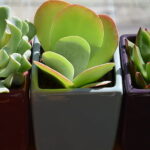 Find the Best Wholesale Suppliers for Bulk Succulent Plants Near You
Find the Best Wholesale Suppliers for Bulk Succulent Plants Near YouStep 4: Choose your succulents
Now comes the fun part - selecting the succulents for your terrarium. Opt for a variety of shapes, sizes, and colors to create an eye-catching display. Choose succulents that have similar care requirements, as this will make maintenance easier. Some popular choices include Echeveria, Haworthia, Aloe, and Sedum. Make sure to leave enough space between each plant to allow them to grow and spread.
Step 5: Plant and arrange the succulents
Once you've chosen your succulents, carefully remove them from their nursery pots and gently loosen the roots. Dig a small hole in the soil and place the succulent, ensuring that the roots are covered. You can use your fingers or a small spoon for this process. Arrange the succulents in a way that is aesthetically pleasing, considering their different heights and colors. Get creative and experiment with different arrangements until you're satisfied with the overall look.
Step 6: Add decorative elements
To elevate the visual appeal of your succulent terrarium, consider adding some decorative elements. You can include small rocks, pebbles, or decorative sand to create texture and depth. Additionally, adding miniature figurines or small ornaments can add a touch of whimsy and personalization. Just make sure not to overcrowd the terrarium and allow enough space for the plants to grow.
Step 7: Maintain and care for your terrarium
Now that your succulent terrarium is complete, it's important to provide the necessary care to keep it thriving. Succulents are relatively low-maintenance plants, but they do have specific requirements. Water your terrarium sparingly, allowing the soil to dry out completely between waterings. Overwatering can lead to root rot and other issues. Additionally, remove any dead leaves or spent blooms to promote healthy growth. Keep an eye on your terrarium and adjust its care based on the needs of your succulents.
With these easy steps, you can create a stunning DIY succulent terrarium that will not only brighten up your home but also bring a touch of nature indoors. Get creative, experiment with different succulent varieties, and enjoy the beauty of your own little green oasis!
Mist the terrarium occasionally to maintain humidity
One of the key factors in keeping your succulent terrarium thriving is to maintain the right level of humidity. Succulents, although known for their ability to withstand dry conditions, still require some moisture to stay healthy.
To ensure proper humidity, you can mist your terrarium every few days. This will provide a light and consistent moisture level without saturating the soil. Use a spray bottle filled with filtered or distilled water and mist the plants and soil gently. Be careful not to overwater as this can lead to root rot and other issues.
When misting the terrarium, pay attention to the leaves of the succulents. If you notice any signs of waterlogged or yellowing leaves, reduce the frequency of misting. On the other hand, if the leaves appear shriveled or dry, increase the frequency of misting.
It's important to note that misting alone may not be sufficient to maintain the humidity level in your terrarium, especially if you live in a dry climate. In such cases, you can also place a humidity tray filled with water near the terrarium. As the water evaporates, it increases the humidity in the surrounding area, benefiting your succulents.
Remember, each succulent has its own specific water needs, so it's essential to observe and adjust the misting frequency accordingly. By monitoring the moisture levels and providing the right amount of humidity, you'll be able to create a stunning succulent terrarium that thrives in its own mini ecosystem.
Monitor the terrarium for any signs of pests or disease
Once you have created your stunning DIY succulent terrarium, it's important to monitor it regularly for any signs of pests or disease. Keeping a close eye on your terrarium will help ensure the health and longevity of your succulents.
Inspecting for Pests
Pests can be a common problem for succulent terrariums. Some common pests to watch out for include mealybugs, aphids, and spider mites. These tiny insects can quickly multiply and damage your succulents if left untreated.
To inspect for pests, carefully examine the leaves and stems of your succulents. Look for signs of tiny insects, webs, or sticky residue. If you notice any of these signs, it's essential to take immediate action to prevent further damage.
Treatment: If you spot pests in your terrarium, there are several options for treatment. One natural method is to use a mixture of water and mild soap to gently wash away the pests. You can also try using organic insecticidal soap or neem oil spray, which are effective in controlling common succulent pests.
Identifying and Treating Diseases
In addition to pests, succulents can also be susceptible to diseases. Common diseases include root rot, powdery mildew, and fungal infections. It's essential to identify and treat these diseases promptly to prevent them from spreading.
To identify diseases, look for signs such as wilting, discoloration, or black spots on the leaves. If you suspect a disease, it's best to remove the affected plant from the terrarium and isolate it to prevent further contamination.
Treatment: The treatment for succulent diseases varies depending on the specific condition. For example, root rot can be treated by removing the affected roots and replanting the succulent in fresh, well-draining soil. Fungal infections may require the use of a fungicide. It's important to research and follow the appropriate treatment methods for each specific disease.
By regularly monitoring your DIY succulent terrarium for pests and diseases, you can ensure the health and beauty of your plants. Remember to take prompt action if you spot any signs of trouble, and your succulents will thrive in their stunning home decor.
Enjoy your stunning DIY succulent terrarium as a beautiful home decor piece
Creating a DIY succulent terrarium is a fun and rewarding project that will not only add a touch of green to your home but also serve as a stunning piece of home decor. By following these simple steps, you can create a beautiful succulent terrarium that will brighten up any space.
Gather Your Materials
Before you begin, gather all the materials you will need for your succulent terrarium:
- A glass container or vase
- Succulent plants
- Cactus soil mix
- Decorative rocks or pebbles
- Moss or other decorative elements
- A small spoon or trowel
- A watering can or spray bottle
Prepare the Container
Start by choosing a glass container or vase that will showcase your succulents. Make sure it has drainage holes or add a layer of rocks at the bottom for proper drainage. This will prevent your succulents from sitting in water and potentially rotting.
Layer the Materials
Next, create layers in your container to provide the ideal environment for your succulents. Begin with a layer of rocks or pebbles at the bottom, followed by a layer of activated charcoal to help filter the water.
Then, add a layer of cactus soil mix, leaving enough space for your succulent plants. Gently pat down the soil to create a stable base for your plants.
Plant Your Succulents
Now it's time to plant your succulents. Carefully remove them from their pots and gently loosen the roots. Dig small holes in the soil and place the succulents in their new home. Make sure to space them out evenly and leave enough room for them to grow.
Once you have planted all your succulents, lightly pack the soil around the base of each plant to secure them in place.
Add the Finishing Touches
To complete your succulent terrarium, add some decorative elements. You can place moss, decorative rocks, or small figurines among your succulents to add visual interest.
Care for Your Terrarium
After assembling your succulent terrarium, it's important to provide the right care to ensure its longevity. Place your terrarium in a spot with bright, indirect sunlight, as succulents thrive in well-lit areas.
Water your succulents sparingly, allowing the soil to dry out completely between waterings. Overwatering can lead to root rot, so it's better to underwater than overwater.
Remember to occasionally remove any dead or yellowing leaves to keep your succulent terrarium looking its best.
With proper care, your DIY succulent terrarium will flourish and become a stunning centerpiece in your home. Get creative with different succulent varieties and container designs to personalize your terrarium and make it truly unique.
Frequently Asked Questions
1. What materials do I need to make a succulent terrarium?
You will need a glass container, succulent plants, potting soil, pebbles or rocks, activated charcoal, and decorative elements like moss or small figurines.
2. How often do I need to water my succulent terrarium?
Succulents have low water requirements, so water your terrarium only when the soil feels dry to the touch, typically every 1-2 weeks.
3. Can I place my succulent terrarium in direct sunlight?
Succulents prefer bright, indirect light, so it's best to place your terrarium near a window with filtered sunlight rather than direct sunlight.
4. How do I prevent my terrarium from getting too humid?
To prevent excess humidity, make sure your terrarium has good ventilation by removing the lid occasionally and allowing fresh air to circulate. You can also use a moisture meter to monitor humidity levels.
If you want to read more articles similar to DIY Succulent Terrarium: A Step-by-Step Guide to Stunning Home Decor, you can visit the Planters and Arrangements category.

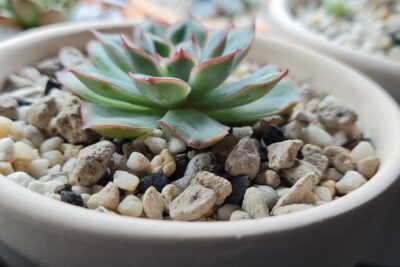
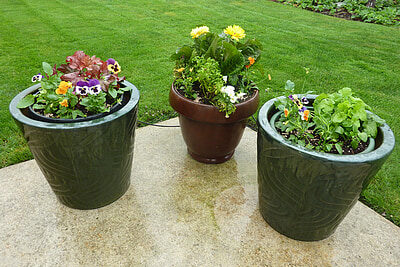


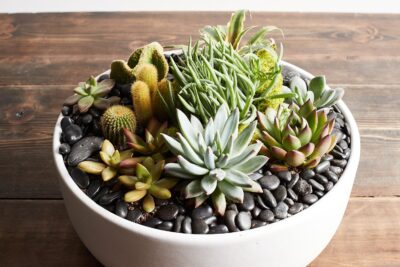
You Must Read